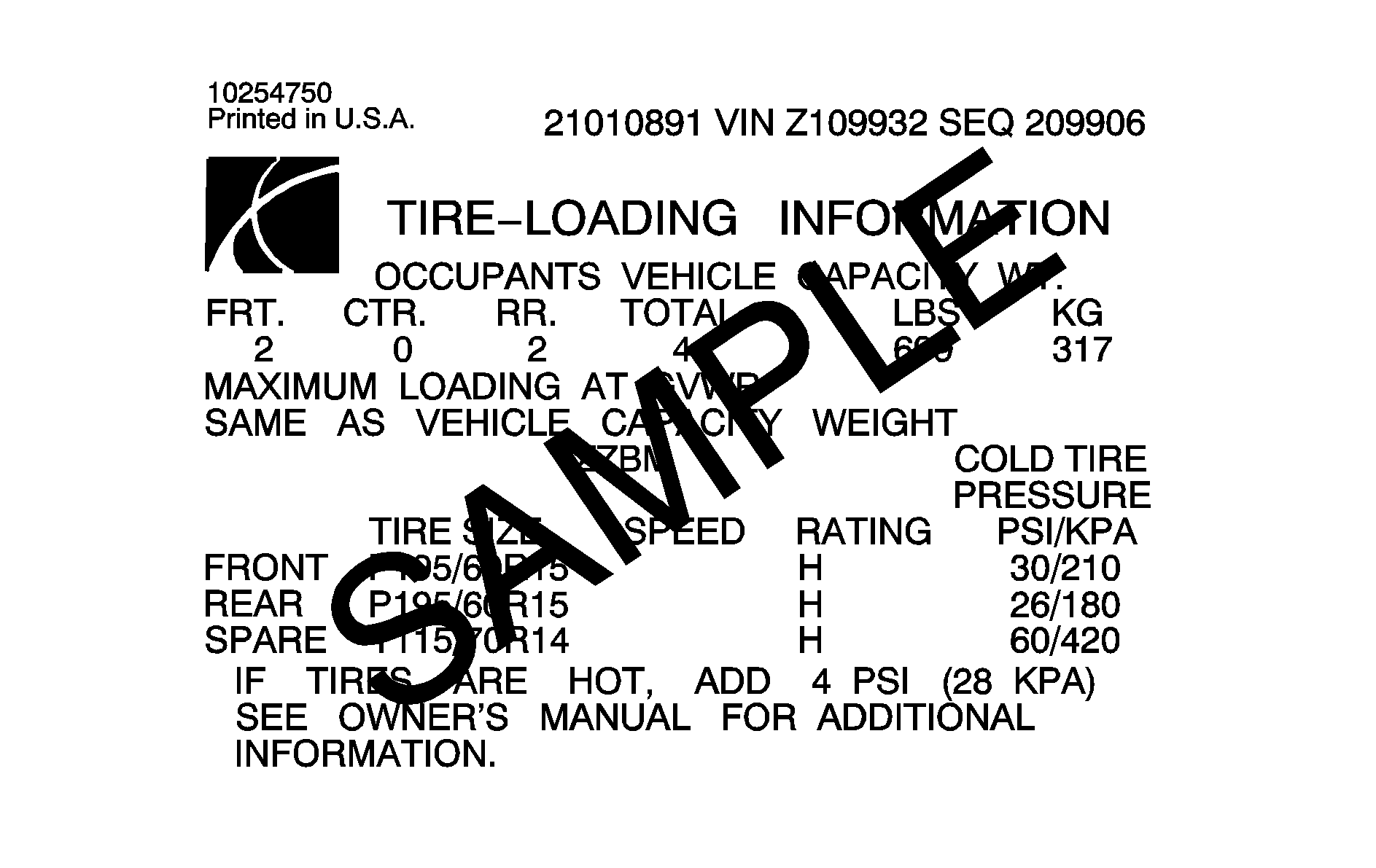
The Certification/Tire Label is located on the rear edge of the driver's side rear door. The label shows the size of your original tires and the inflation pressures needed to obtain the gross weight capacity of your vehicle.
This is called the Gross Vehicle Weight Rating (GVWR). The GVWR includes the weight of the vehicle all occupants, fuel, cargo, and trailer tongue weight, if pulling a trailer.
The Tire Certification/Tire label also tells you the maximum weights for the front and rear axles, called Gross Axle Weights Rating (GAWR). To find out the actual loads on your front and rear axles, you need to go to a weigh station and weigh your vehicle. Your Saturn retailer can help you with this. Be sure to spread out your load equally on both sides of the centerline.
Never exceed the GVWR for your vehicle, or the GVWR for either the front or rear axle.
Similar appearing vehicles may have different GVWRs and payloads. Please note your vehicle's Certification/Tire label or consult your Saturn retailer for additional details.
Caution: Do not load the vehicle any heavier than the Gross Vehicle Weight Rating (GVWR), or either the maximum front or rear Gross Axle Weight Rating (GAWR). If you do, parts on the vehicle can break, and it can change the way your vehicle handles. These could cause you to lose control and crash. Also, overloading can shorten the life of the vehicle.
Using heavier suspension components to get added durability might not change your weight ratings. Ask your retailer to help you load your vehicle the right way.
If you put things inside your vehicle--like suitcase, tools, packages, or anything else--they will go as fast as the vehicle goes. If you have to stop or turn quickly, or if there is a crash, they'll keep going.
Caution: Things you put inside the
vehicle can strike and injure people in a sudden stop or turn, or in a crash.
• Put things in the trunk of your vehicle. In a trunk,
put them as far forward as you can. Try to spread the weight evenly.
• Never stack heavier things, like suitcases, inside
the vehicle so that some of them are above the tops of the seats.
• Do not leave an unsecured child restraint in the vehicle.
• When you carry something inside the vehicle, secure
it whenever you can.
• Do not leave a seat folded down unless you need to.
There's also important loading information for off-road driving in this handbook. See "Loading Your Vehicle for Off--Roading Driving" in the index.
Payload
The payload capacity is shown on the Tire Loading Certification Label. This is the maximum load capacity the your vehicle can carry. Be sure to include the weight of the occupants as part of your load. If you add any accessories or equipment after your vehicle left the factory, remember to subtract the weight of these things from the payload. Your retailer can help you with this.
Add-On Equipment
When you carry removable items, you may need to put a limit on how many people you carry inside your vehicle. Be sure to weight your vehicle before you buy and install the new equipment.
